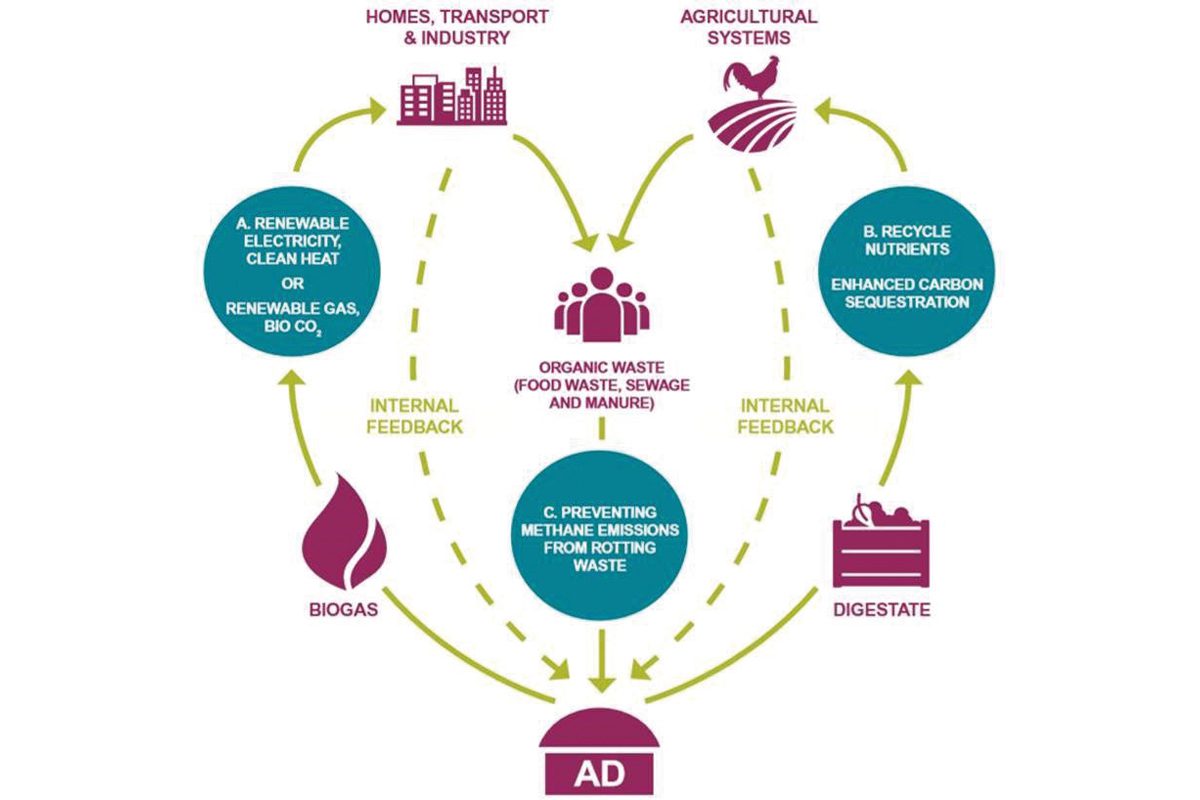Anaerobic digestion (AD) could help cut greenhouse gas (GHG) emissions by 10% by 2030, reveals a report recently published by the World Biogas Association (WBA).
In Biogas: Pathways to 2030, WBA details how deploying AD to capture and recycle the billion tonnes of organic wastes generated annually by human activity could play a major part in the fight against climate change.
Every year, we generate over 105bn tonnes of organic wastes (sewage, food waste, garden waste, food and drink-processing waste, farm and agricultural wastes), which release harmful methane and other greenhouse gases into the atmosphere as they decompose. Today, only 2% of this organic matter is treated through AD and transformed into a green gas and a biofertiliser. These can be used to mitigate GHG emissions in carbon-intensive sectors such as transport, heating and agriculture.
AD is the process by which organic matter breaks down under anaerobic conditions (i.e., deprived of oxygen) in a container called digester. There, it releases biogas, whilst its residue turns into a biofertiliser called digestate. By transforming organic waste into these green bioresources, AD not only helps displace fossil-based equivalents, but also offers a green waste-management alternative to landfill and incineration. Digestate being rich in nutrients, AD also helps restore soils and boost farming productivity.
In addition to reducing GHG-emissions, the AD industry therefore provides a solution to soil erosion, air pollution, and many of the environmental and social challenges that the world faces. More than just helping countries decarbonise their economies to meet their Paris Agreement commitments, AD and biogas also contribute to the development of a bioeconomy which can create millions of jobs and meet nine of the 17 UN Sustainable Development Goals. The technology is ready, what it needs now is the political will.








